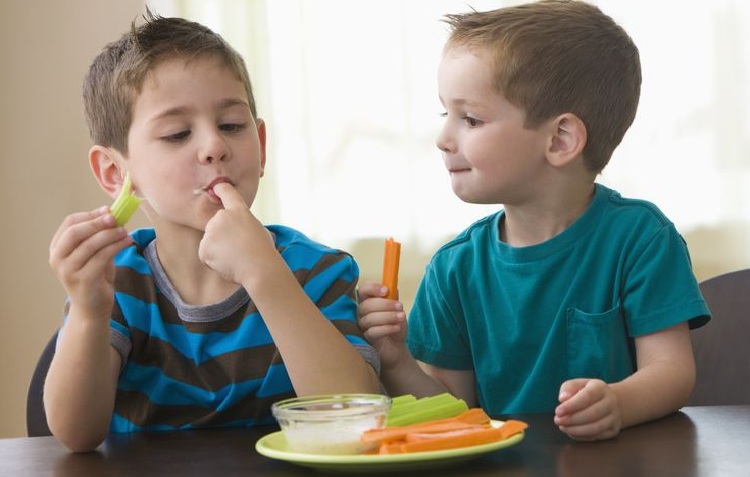
The iconic singer’s life story is an eye-opening reminder of how addiction can affect the life of anyone — and our need to improve how we treat it.
Addiction can happen to anyone
There are a number of factors that can increase the likelihood that any person, Houston or otherwise, would turn to destructive behavior. This path can begin very early in life.
A prominent study on Adverse Childhood Experiences (ACE), concluded that those who experienced abuse (physical, emotional, sexual), neglect (physical, emotional), or household dysfunction (mental illness, domestic abuse, substance abuse, incarceration, divorce) as a child faced higher likelihood for smoking, alcohol, and drug use. They’re even likelier to be overweight or chronically late for work.
A person can determine their proclivity toward these destructive behaviors by learning his or her ACE score, which is calculated through tallying the different forms of childhood trauma he or she experienced.
If she ever took the test, Houston may have had a high ACE score.
According to Janelle Westfall, clinical director at Devereux Advanced Behavioral Health Arizona, a child who endures traumatic events like those experienced by Houston is at “a much higher risk” for developing substance abuse and health issues later in life.
The traumatic experiences endured by Houston as a child are discussed at length in “Whitney.”
Despite the image of the idyllic family they projected once Houston became famous, the family’s household was dysfunctional. Houston’s parents, John and Cissy, engaged in marital infidelities, which ultimately led to their divorce. Houston was bullied in a predominantly African-American school due to the light color of her skin.
And in a bombshell revelation, a source in the documentary revealed that a relative sexually abused Houston as a child. She was left in the care of this predator as her mother, Cissy, traveled frequently to pursue her career as a singer.
There’s also a genetic component to addiction.
Studies have estimated that genetics may account for up to 60 percent of an individual’s vulnerability to addiction. This explains why some people can use a drug and never try it again, while others develop a serious dependency.
“If [an individual has] a genetic predisposition to addiction, then that can be very dangerous, and that experimentation can turn into an addiction rather quickly,” confirmed Westfall. Therefore, it’s important to discuss a family history of addiction with doctors from an early age.

A third factor is an individual’s peer group.
According to the experts at Devereux Arizona, if those surrounding an individual are using a substance, they are likelier to experiment.
As seen in “Whitney,” Houston grew up in a middle-class home in East Orange, New Jersey that was surrounded by drug culture. Her brother Michael admitted to enabling her drug use.
“If anything was gonna be done, I was gonna be the one to show it to her,” he said in the documentary. Her brother’s friend, Keith Kelly, claimed he was the first to give Houston drugs — marijuana and cocaine — on her 16th birthday.
Fame can complicate addiction
Adulthood and fame didn’t help Houston escape this environment. On the contrary, Houston was surrounded by enablers who procured her drugs and normalized dangerous behavior.
These “yes men” can present significant hurdles between a public figure and treatment, said Sarah Allen Benton, MS, LMHC, the owner of Benton Behavioral Health Consulting and author of “Understanding the High-Functioning Alcoholic.”
“The curse of fame is often that there’s a lack of leverage within the family or entourage to lead a celebrity towards treatment,” Benton said. “Celebrities such as Whitney often surround themselves with people who are related to them or paid and who benefit from enabling them. If an employee put pressure on them to seek help, they could risk losing their job.”
Benton added, “There are also pressures that famous individuals such as Whitney may face which can be the perfect storm for addictive and mental health issues: unlimited money and access to drugs, sycophants, career pressure, grueling schedules and a party-oriented lifestyle — for some.”
For many, including those who aren’t celebrities or dependent on substances, drugs and alcohol are common ways to deal with life’s stressors as a form of self-medication.
“In our society we use… drugs and alcohol to cope with sometimes just everyday things,” said Yvette Jackson, LMSW, DBH, assistant executive director at Devereux Arizona. Jackson cited a drink after a hard week at work as a classic example of this behavior.
However, “when that glass of wine becomes a bottle, and then that bottle becomes two bottles,” the body can become used to the substances, and the dosage must be increased in order to feel the same effects.
But not all drugs are bad. When prescribed by a doctor, for example, “opiates can help provide you that calmness and that helps relieve your anxiety,” Westfall added. “So, there’s good side effects from the use of drugs. The problem is and that they have to use more and more and more as time goes on.” And those suffering from a mental illness, like depression or bipolar disorder, are more likely to abuse drugs.
They “are very drawn to the use of medication because they’re trying to make themselves feel better,” Westfall said.
Finding healthy alternative coping mechanisms is key
Jackson and Westfall agreed that drugs and alcohol are not long-term solutions for stress, because they can lead to dependence or overdose.
Instead, these experts recommend finding alternative coping mechanisms. Therapy can be a key resource, as well as “replacement behaviors” like mindfulness training, yoga, and basic exercise, which can help an individual destress and “get the endorphins going,” Westfall said.
Overall, society can also take steps to reduce the stigma around mental health. One of these would be the integration of mental health into primary care.
“Mental health is healthcare,” stressed Jackson. “There’s no physical health without good mental health.” It’s a maxim worth remembering as the United States grapples with an opioid crisis, which is also a mental health crisis.
According to the National Alliance on Mental Illness, 1 in 5 American adults experience mental illness.
Minority groups are at greater risk
In addition to genetics, a person’s race, sexual orientation, and gender can all factor into the level of stress they experience. African-Americans and those in the LGBT community experience chronic stress at higher rates due to discrimination and perceived discrimination, reports the American Psychological Association. Stress can lead to a variety of health issues, including diabetes, mental disorders, and substance abuse.
Despite her success, Houston’s race did not make her life any easier. From the beginning of her career, Houston, who is black, was carefully marketed to a white audience with an image that glossed over her racial identity. As a result, she became the first black woman to top the pop charts. But this marketing had consequences. In 1989, Houston was booed at the Soul Train Awards, an act that had a life-changing impact on her self-esteem.
Houston’s struggles may also be rooted in the stigma surrounding her rumored sexuality. The singer never identified as queer in her lifetime. But in “Whitney,” the singer was described as “fluid” by her musical associate Rickey Minor, indicating an attraction to both men and women. The 1980s and early 90s saw the height of the AIDS crisis. It wasn’t an accepting time to be queer in the United States. An out female singer risked being publicly and commercially rejected.
The film also showed that, even today, members of Houston’s family weren’t accepting of LGBTQ people. Gary Houston, Whitney Houston’s brother, described Robyn Crawford — Houston’s friend, assistant, and rumored lover — as “wicked.”
Family acceptance is a key part of good mental health and an important safety net, said Jackson, and “this was something that didn’t appear to be there” for Houston.
Moreover, whatever their relationship may have been, Crawford was a lifeline to Houston, and her forced departure from Houston’s team left the singer vulnerable, attested Bobby Brown, Houston’s husband of 14 years, in an interview with “Us Weekly” in 2016.
“I really feel that if Robyn was accepted into Whitney’s life, Whitney would still be alive today,” Brown said. “She didn’t have close friends with her anymore.”
Diagnosis is essential
It’s unknown if Houston was diagnosed with a mental health disorder — and all three of the health experts that spoke with Healthline cited a policy of not diagnosing individuals who they hadn’t treated personally.
But during her lifetime, warning signs of Houston’s troubles were on display for the world to see: her near-skeletal appearance at the Michael Jackson tribute in 2001; her admission of drug use to Diane Sawyer in a shockingly frank interview in 2002; her legendary voice reduced to a rasp by the 2009/10 “Nothing But Love Tour.”
Benton recalled the 2005 Bravo reality show “Being Bobby Brown” — which showcased Houston, her then-husband Brown, and her daughter Bobbi Kristina — as being a major red flag.
“I remember being shocked at seeing a hardened Whitney sleeping on the couch late into the day and appearing out of it,” Benton said. “It was concerning that Whitney and Bobby were shamelessly exposing their daughter to a partying lifestyle as well as to their impairment on drugs and alcohol.”
However, Houston is no outlier as an entertainer struggling with drugs and alcohol. Recently, Demi Lovato overdosed on heroin and is currently recovering after being diagnosed with bipolar disorder several years beforehand.
There’s a crisis in the music industry, which is enabled by “a culture of greed that views musicians, actors, etc. as commodities and paychecks,” Benton said. This is a culture that needs to change.
“Agents and managers will often cover up and protect the celebrity from exposure and prevent getting treatment for selfish reasons instead of putting their employer’s well-being first,” Benton said. “I’d suggest that the industry culture needs to change so those closest to the celebrity have a process and leverage to get them help for whatever mental health, addiction, or medical condition they’re suffering from — without fear of losing their job. This should be viewed as an act of love and caring.”
Additionally, society’s overall attitude toward drug use and mental illness often perpetuate a culture of shame, making treatment even more difficult for those who need it.
This is magnified many times over when the person is a celebrity.
The larger legacy of an icon
Houston, through her music and life, gave love to countless people. Ultimately, her tragic end can also offer lessons to the world.
“Whitney’s story is a cautionary tale. She was a brilliant artist with the potential for lifelong success. However, fame and fortune don’t equate to happiness. Therefore, I hope that her fans can prioritize their wellness in life above success,” Benton concluded. “Additionally, I have read that Whitney never felt she could be herself on terms of the image that managers wanted her to portray. Let this to be a lesson that we must find and live our truth or we may lose ourselves in what others expect of us.”
For anyone with symptoms or a diagnosis of mental illness, the National Institute of Mental Health has compiled a list of helpful resources.
Suicide prevention
If you think someone is at immediate risk of self-harm or hurting another person:
• Call 911 or your local emergency number.
• Stay with the person until help arrives.
• Remove any guns, knives, medications, or other things that may cause harm.
• Listen, but don’t judge, argue, threaten, or yell.
If you or someone you know is considering suicide, get help from a crisis or suicide prevention hotline.
Source






























You must be logged in to post a comment.